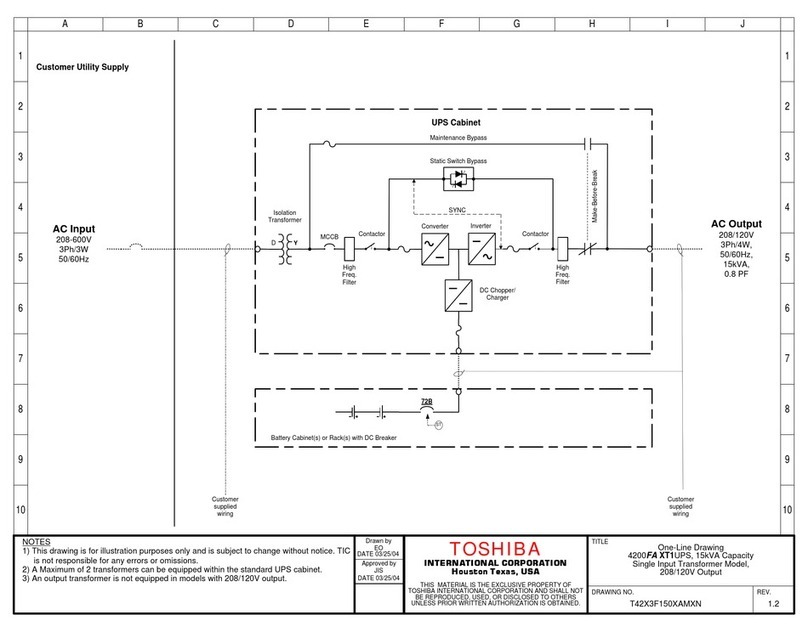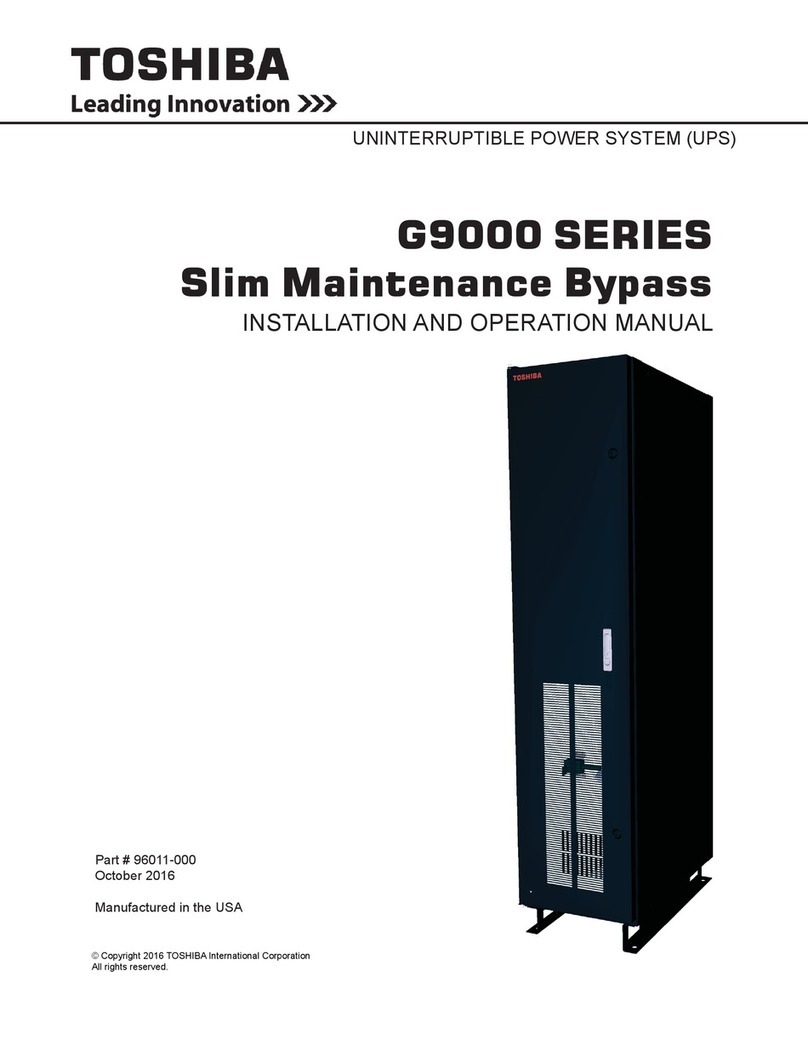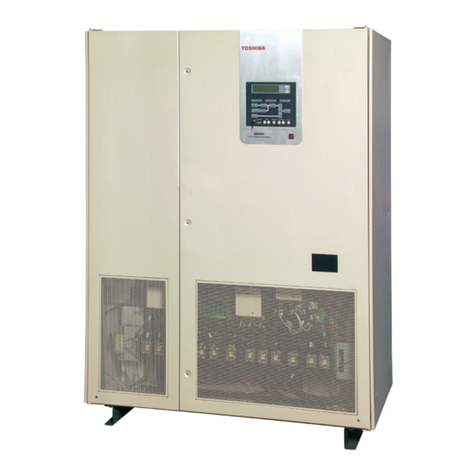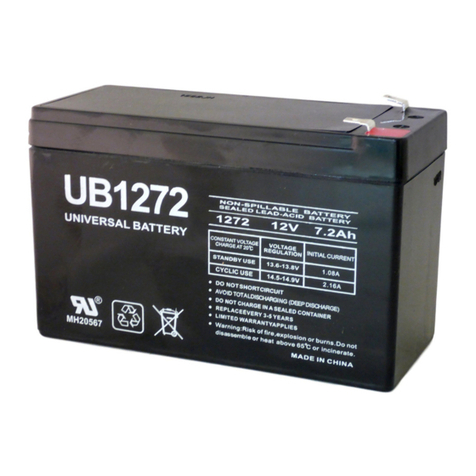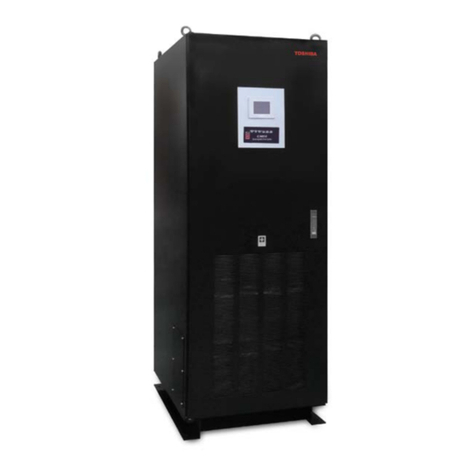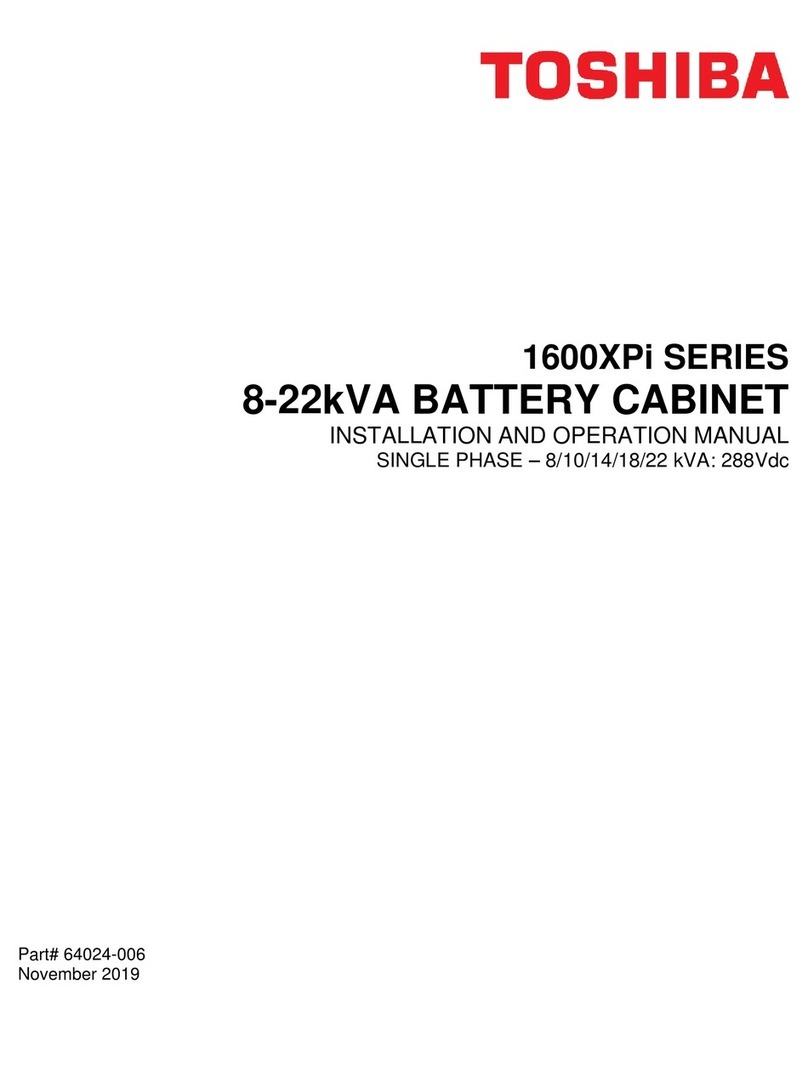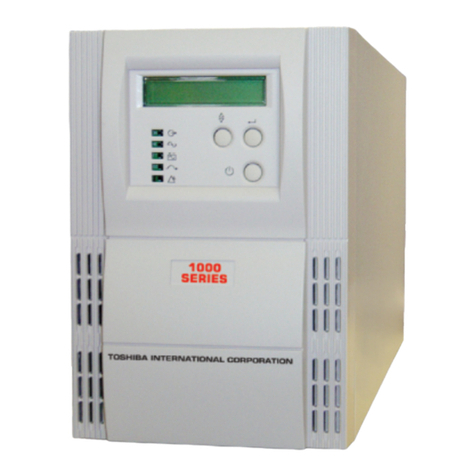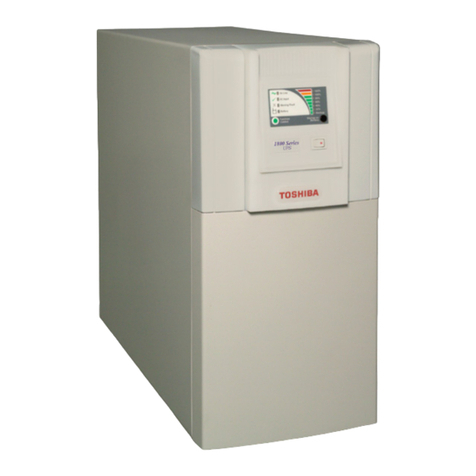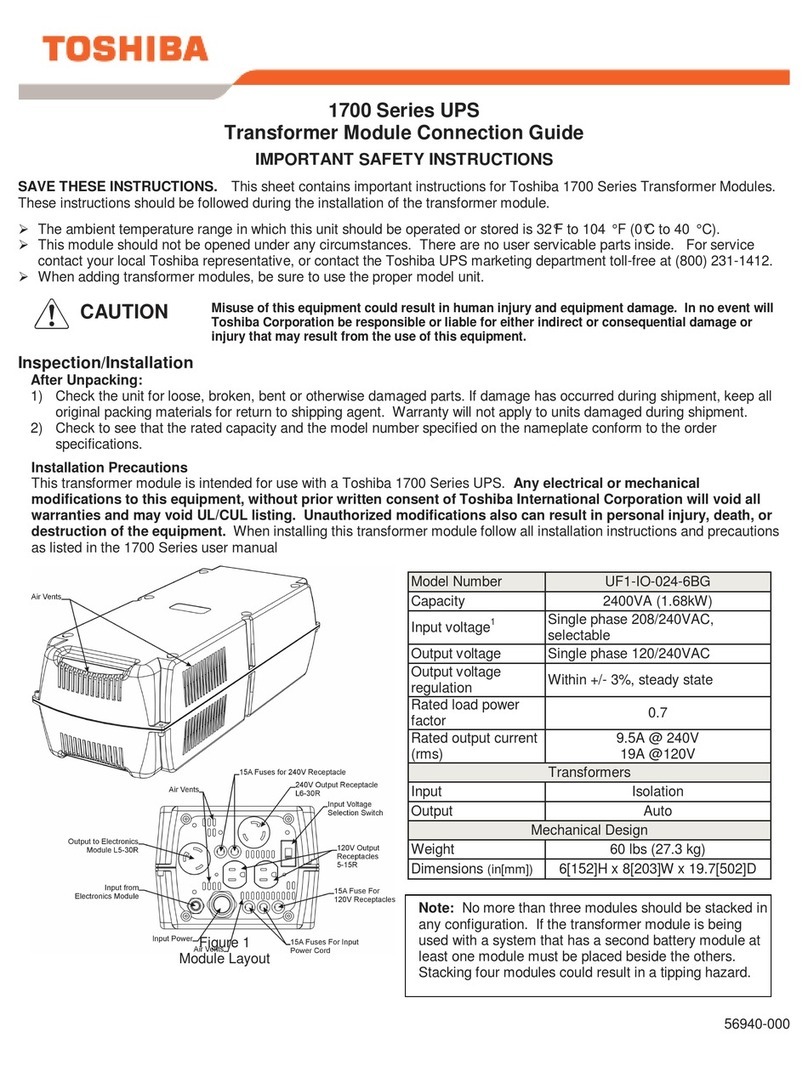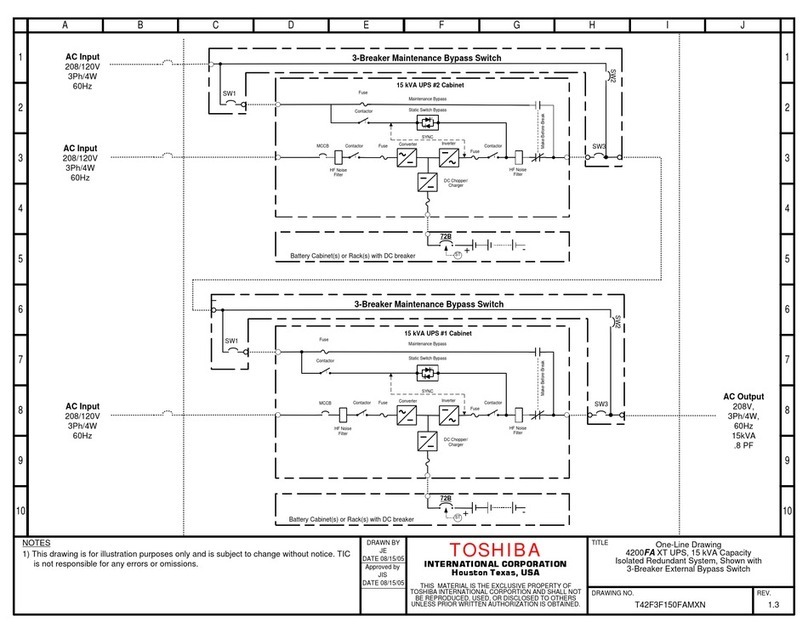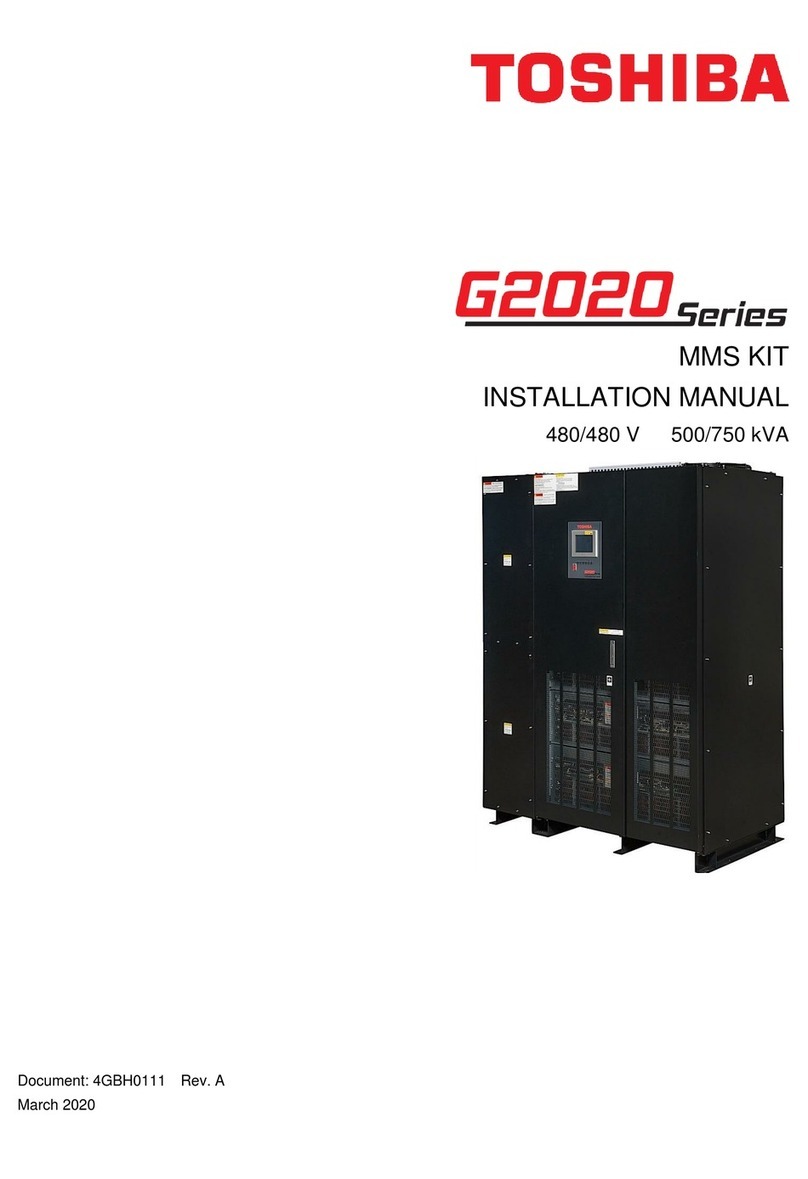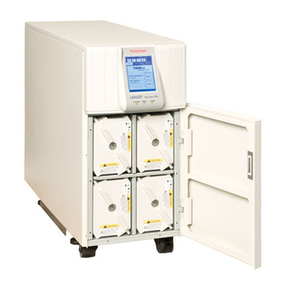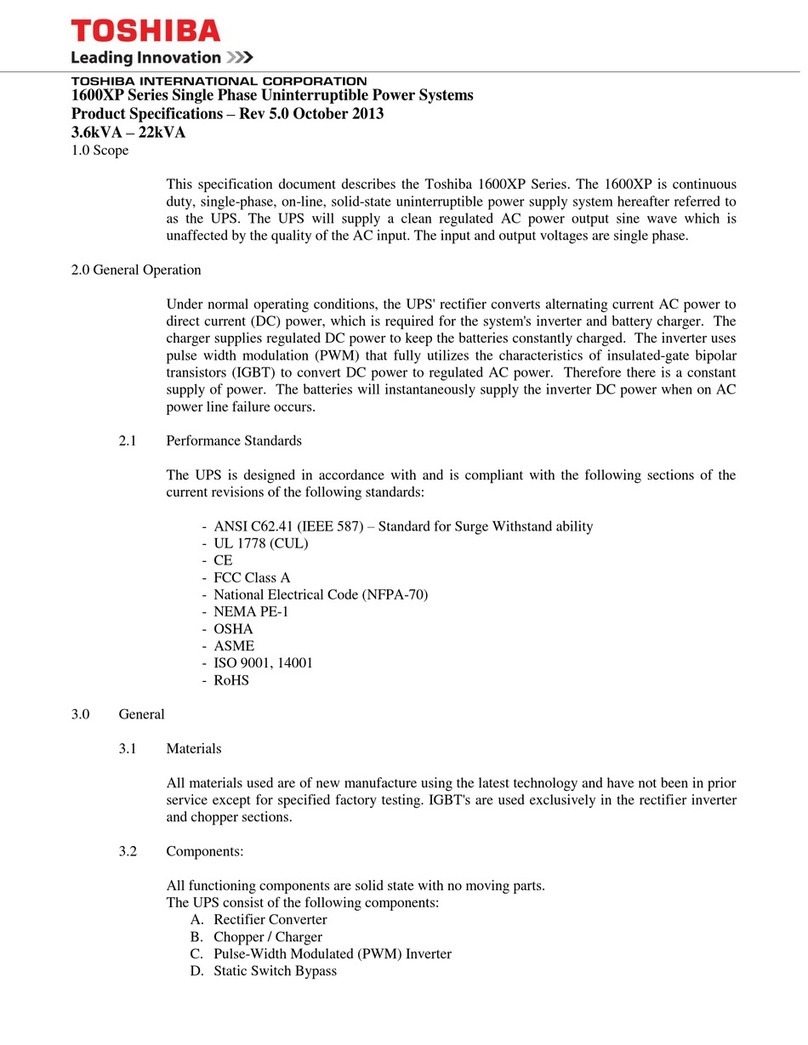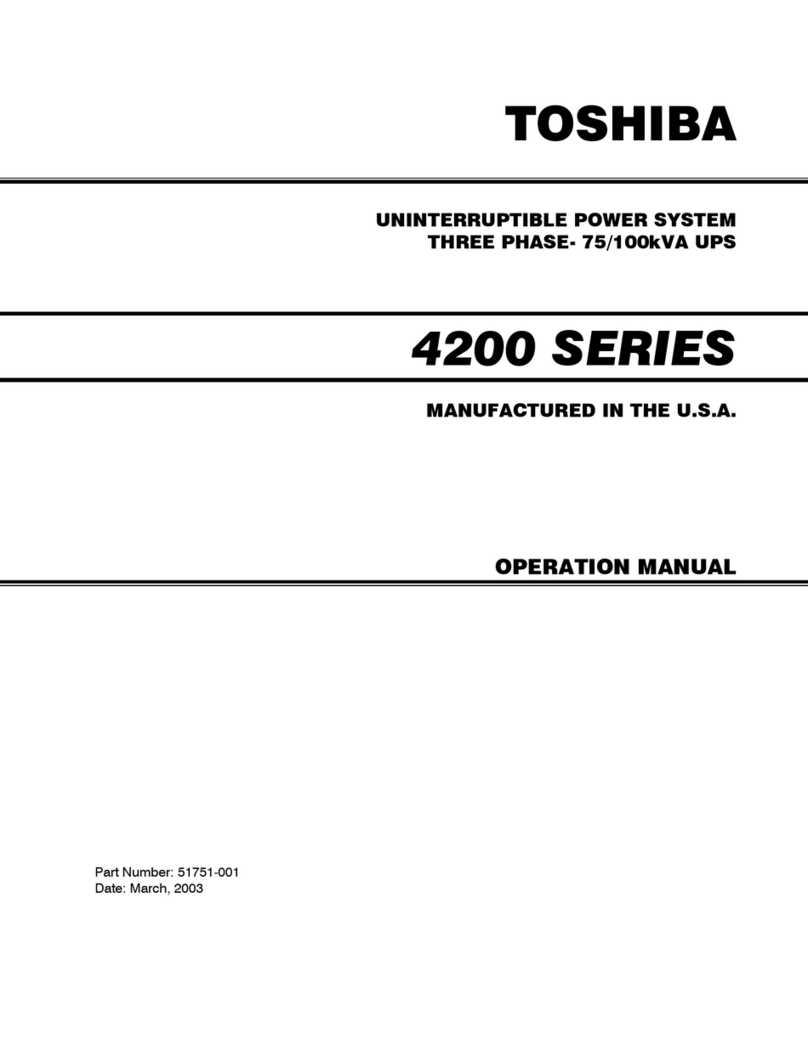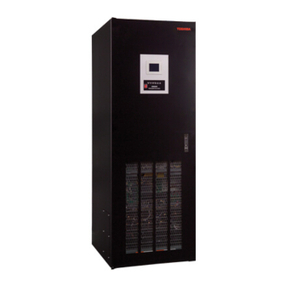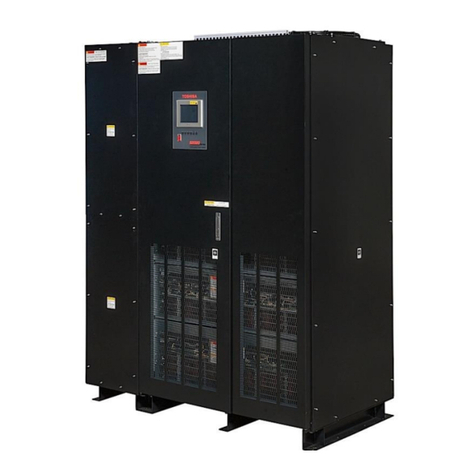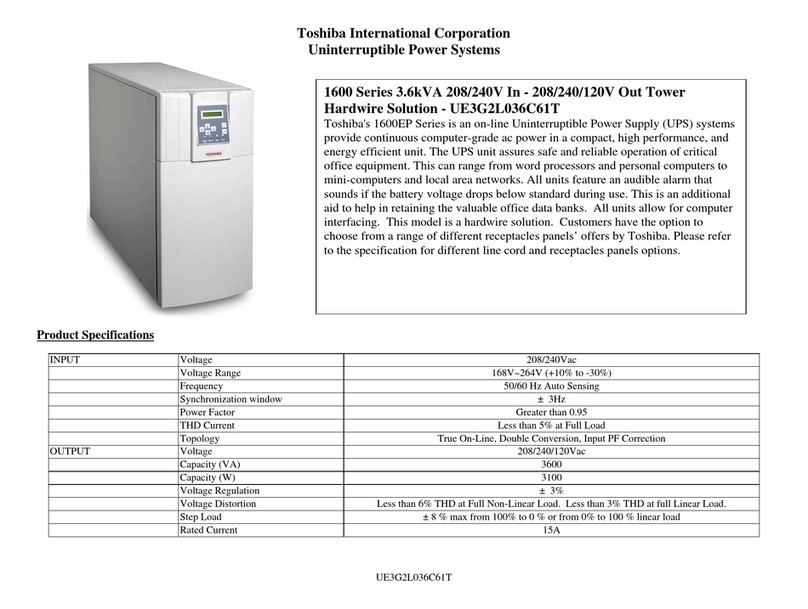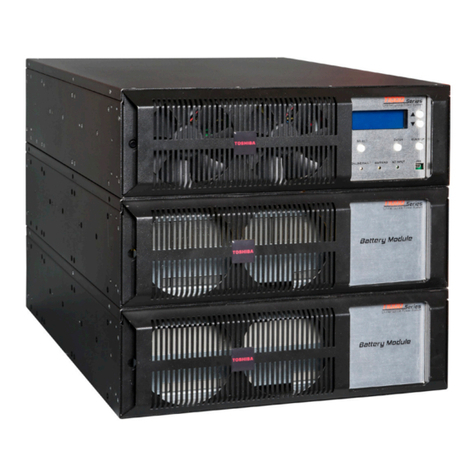
Product Description
Theory of Operation
An uninterruptible power supply is a system that is installed between the commercial power and the
load equipment. It is used during short-term blackouts or brownouts. The UPS provides steady ac
output power during these commercial power interruptions. This power is provided for a long enough
time so that the load can be shut down in an orderly fashion. This prevents loss of data and possible
damage to both hardware and software.
During normal operation the UPS uses commercial ac power. In addition, it takes in all of the high
voltage spikes and transients caused by switching and faults, and all of the common mode and
normal mode noise which is associated with commercial ac power. The UPS converts it all to flat
dc power. From this dc power, the UPS charges the batteries and generates its own extremely high
quality ac waveform output. The result of this process is maximum power conditioning and regulation.
If the ac power supplied to the UPS drops below a specified voltage level, the unit's batteries
automatically begin supplying power instead of receiving it. This insures that the loads connected
to the UPS continue to receive power with no interruption. When ac input power becomes available
again, operation returns to normal. The unit's batteries begin to recharge so they will be ready for
the next power interruption.
Application and Use
Toshiba's 1600 Plus Series of on-line uninterruptible power supply (UPS) systems provide continuous
computer-grade ac power in a compact, high performance, and energy efficient unit. The UPS unit
assures safe and reliable operation of critical office equipment. This can range from word processors
and personal computers to mini-computers and local area networks. All units feature an audible alarm
which sounds if the battery voltage drops below standard during use. This is an additional aid to help
in retaining the valuable office data banks. All units allow for computer interfacing.
Output Rating
Toshiba's 1600 Series (240/208V) offers UPS models with the following capacities and voltages:
When the unit is operating at 240 volts, UPS models UE3G2L024C6(T)(P#), UE3G2L036C6(T)(P#),
UE3G2L060C6(T)(P#), and UE3G2L080C6(T)(P#) will supply the maximum rated power to the loads
(output capacity: 2.4/3.6/6/8 kVA). If the unit is operating at 208 volts, UPS output capacity will be
reduced to 87% of maximum rated power capacity (output capacity: 2.08/3.12/5.2/6.93 kVA).
Power Backup
When an electrical power failure occurs, the UPS unit's internal maintenance-free batteries
automatically supply back-up power to the load without interruption. For example, when used
to support a computer, the UPS back-up assures enough additional time to complete the activity
and store data. This allows an orderly shutdown after a power failure has occurred.
Power conditioning
When commercial power is present, the UPS supplies conditioned power to the load while
maintaining its batteries in a charged condition. The UPS protects against the normal, every day
problems associated with heavy use of raw commercial power, including power sags, surges, signal
interference, and spikes. This protection keeps power-line problems from reaching your load, where
they can cause equipment to operate erratically, or damage software and hardware.
10
TOSHIBA
